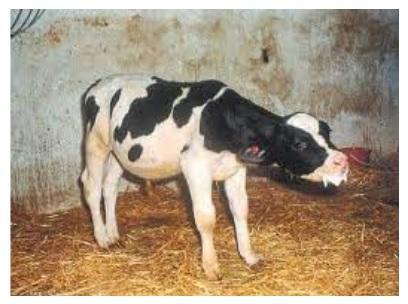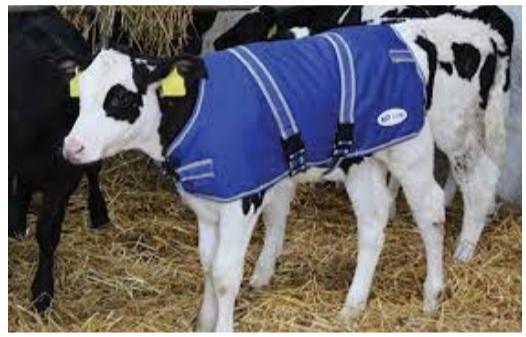Don’t Let Winter Trap your Calves with Pneumonia
Published: December 12, 2022
By: Abbas Moazami Goudarzi / Ph.D. ruminant nutrition, Young Researches and Elite Club,
Pardis Science and Technology Branch, Islamic Azad University, Pradis, Iran.
Pneumonia of calves is a respiratory disease caused by the entry of bacteria and respiratory viruses into the body of calves, which occurs at the age of two to five months, and is more common in closed places and in the winter season. The best prevention of this pneumonia disease in calves is to give colostrum to calves.

Environmental and external factors that cause pneumonia in calves:
- Stress placed on calves during calf purchase and transportation
- Lack of proper ventilation in the place where the calves are kept
- High humidity and the presence of ammonia gases
- The presence of various respiratory bacteria and viruses
- Blinding cold air and strong wind
- Small lung volume compared to the body in calves
The following measures are suggested to prevent pneumonia in different calf keeping systems:
- Keep an eye on the calves, and watch out for shaking, or standing up of the calf’s skin hair. These are signs of cold stress.
- Provide a warm bed with stubble. The depth of the stubble should be at least 8 cm.
- Kneel on the calf for 30 seconds. If your knee gets wet, either change the bedding or add more stubble. The depth of the bed should be enough to cover his arms and legs when lying down.
- The use of natural or mechanical ventilation is very suitable for the purpose of introducing fresh ambient air into the calf's place and exhausting polluted air containing dust, pathogens and waste gas.
- Using a dry and clean blanket or calf jacket is suitable for calves less than 3 weeks old and also for moving calves during the cold weather of the year.

Feed the calves fresh every day. Feed is a secondary source of energy for the calf. When the temperature drops, calves increase energy consumption to maintain body temperature. This takes nutrients away from the immune system and growth. So provide food for them as much as they eat.
Protection of infant calves against winter factors requires the creation of comfortable shelter and prevention of air quality disturbances. To block the windows and entrance doors in buildings without ventilation system, the calf is protected from the cold, but the air quality deteriorates very quickly.
In addition to the place of keeping and the type of place for the calf, it is important to pay attention to the details of the calf’s living environment. The air quality at your altitude may be great, but it may not be 70 cm above the ground, where the calf lives and breathes.
Related topics:
Authors:
Recommend
Comment
Share
26 de septiembre de 2023
colostrum feeding at early age and vaccination may have a boost to other managemental steps to overcome the issue
Recommend
Reply
12 de enero de 2023
Calf jacket is very interesting covering to keep the calf in sever winter season.
Recommend
Reply

Would you like to discuss another topic? Create a new post to engage with experts in the community.







.jpg&w=3840&q=75)